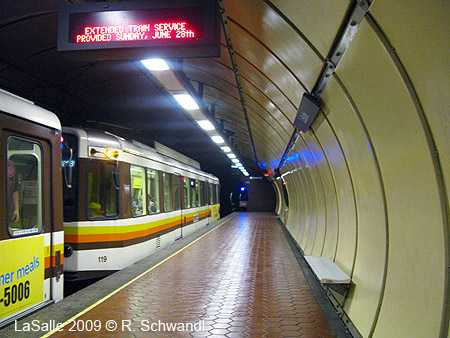dowlingm
Senior Member
Primove would mean digging up the trackbed to lay the induction wiring, wouldn't it?
|
|
|
I'm not sure. Could it just be attached to the trackbed, like the rails? It's not like the current top of the track is flush with the surface ... like on streetcar tracks on roads. Seems to me there's a lot of working areas.Primove would mean digging up the trackbed to lay the induction wiring, wouldn't it?
Not sure the big deal. Far bigger cities do exactly the same thing, dedicating particular equipment to particular lines. Heck in London, they even paint the poles in the cars to match the line they are moved on.Primove is interesting. But then we're stuck with a unique oddball mode only usable in one area.
6-car subways, 4-car subways, Toronto-gauge streetcars, LRT, and all signs are pointing to us being stuck with Mark I ICTS in Scarborough for the next +decade. All unable to be interchanged with one another. Add in Primove, and that's one more we're saddled with.
Primove is interesting. But then we're stuck with a unique oddball mode only usable in one area.
6-car subways, 4-car subways, Toronto-gauge streetcars, LRT, and all signs are pointing to us being stuck with Mark I ICTS in Scarborough for the next +decade. All unable to be interchanged with one another. Add in Primove, and that's one more we're saddled with.
It's also a more marketable option as well. Because, since when do "streetcars" have full height platforms?The other option of course is to convert the at-grade stops to use high floor LRVs, as to not require reconstruction of the platforms on the subway.
It's also a more marketable option as well. Because, since when do "streetcars" have full height platforms?

Before low-floor streetcars and trams, some jurisdictions used high-floor platforms to be level with the high-floor streetcars and trams. Sometimes, they used the steps on one side of the vehicle, but the level high-floor platform on the other. Visit Buffalo, for an example.
That looks a lot like the C-train style of LRT. And I notice they refer to it as "train" on the LED information panel in the picture.Before low-floor streetcars and trams, some jurisdictions used high-floor platforms to be level with the high-floor streetcars and trams. Sometimes, they used the steps on one side of the vehicle, but the level high-floor platform on the other. Visit Buffalo, for an example.

Do Buffalonians call the underground portion of their LRT system a subway?That looks a lot like the C-train style of LRT. And I notice they refer to it as "train" on the LED information panel in the picture.
The wiki does say it shares a lot of similarities with heavy rail. It's even branded as "Buffalo Metro Rail".Do Buffalonians call the underground portion of their LRT system a subway?
Metro Rail is a light rail transit (LRT) system as characterized by the American Public Transportation Association although it shares many characteristics with "heavy rail" metro systems.
Along 80 percent of its track (5.2 miles (8.4 km)), it operates in a high-speed underground subway environment with high-level platforms. This section has eight stations that are spaced fairly widely apart, comparable to many subway stations elsewhere.





